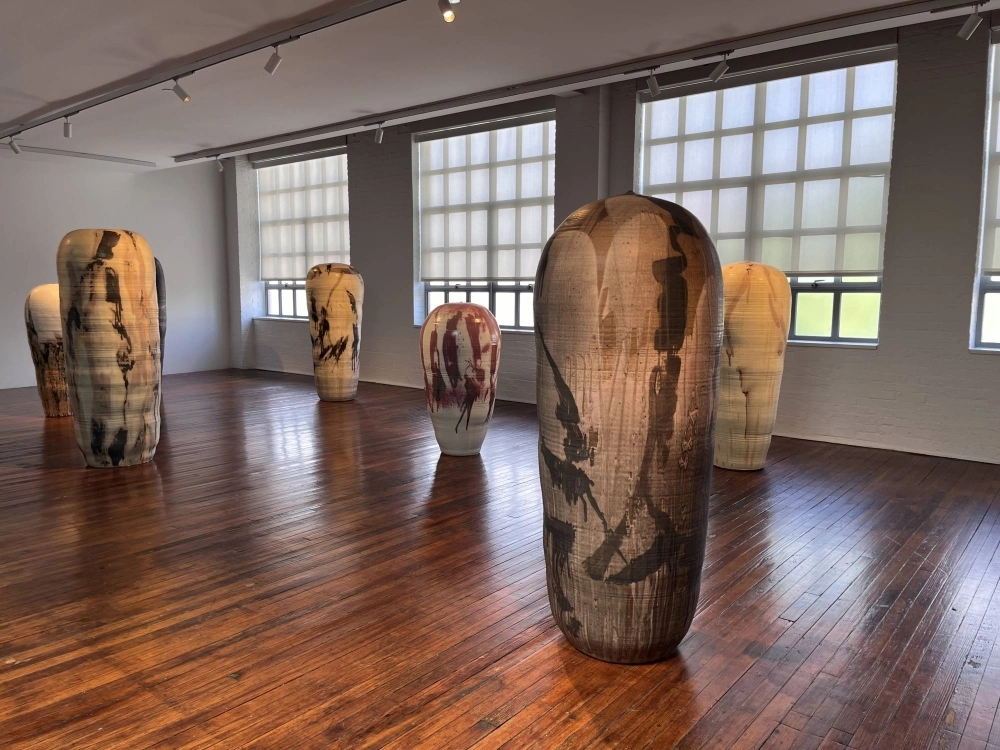In the upstairs galleries of the Isamu Noguchi Museum in Queens, New York, ceramic vessels cast playful shadows resembling snail heads or a flock of birds. Clustered on a white table, these double-spouted vases by Toshiko Takaezu, created in the 1950s, look like precursors to Ghibli spirits. But their cuteness belies their significance to American ceramics.
On view in New York now until July 28, “Toshiko Takaezu: Worlds Within” is part of a resurgence of interest in Takaezu, a Hawaiian artist of Okinawan descent, in the decade following her death in 2011. Shown at the museum dedicated to the works of sculptor Isamu Noguchi, who was a friend and mutual admirer of Takaezu, the exhibit will tour cities across the U.S. until July 2026.
The nearly 200 works from 52 lenders show how Takaezu played with form across a wide range of mediums, including ceramics, painting and textile. At first glance, the pottery feels Japanese, until it doesn’t — bright, bold colors, like deep purple suggesting the flowers and ocean of Hawaii, and bold yellow, reminiscent of sand on the beach.


















With your current subscription plan you can comment on stories. However, before writing your first comment, please create a display name in the Profile section of your subscriber account page.